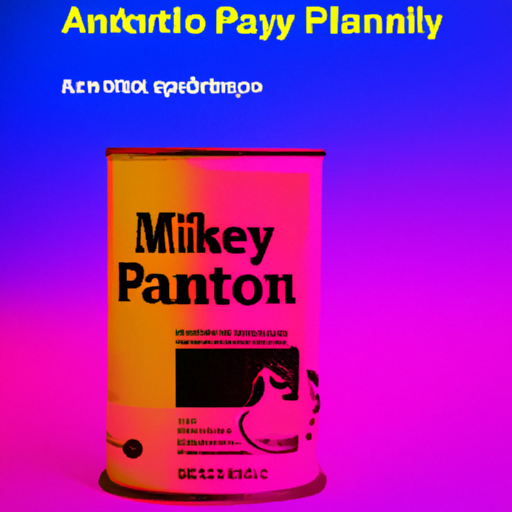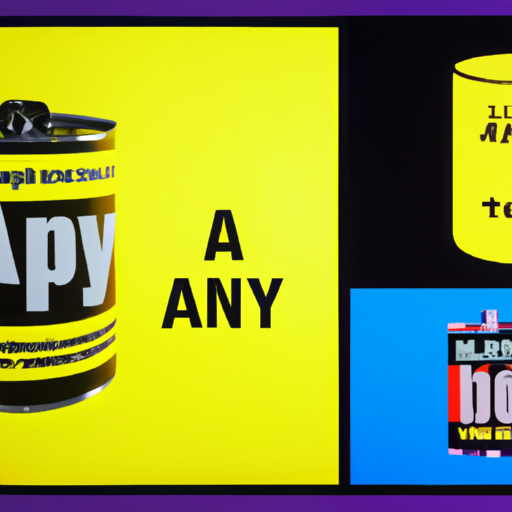
-
Table of Contents
- Beyond CMYK: Exploring Alternative Printing Techniques
- The Limitations of CMYK Printing
- Exploring Alternative Printing Techniques
- 1. Pantone Matching System (PMS)
- 2. Spot Color Printing
- 3. Digital Printing
- 4. UV Printing
- Applications in Various Industries
- 1. Packaging
- 2. Branding and Marketing
- 3. Fine Art and Photography
- 4. Signage and Displays
- Summary
Beyond CMYK: Exploring Alternative Printing Techniques

Printing has come a long way since the invention of the printing press in the 15th century. From the traditional CMYK (Cyan, Magenta, Yellow, and Key/Black) printing process to the rise of digital printing, the industry has constantly evolved to meet the demands of businesses and consumers. However, in recent years, there has been a growing interest in exploring alternative printing techniques that go beyond the limitations of CMYK. In this article, we will delve into some of these alternative printing techniques, their benefits, and their applications in various industries.
The Limitations of CMYK Printing
CMYK printing has been the standard for many years, and it is still widely used today. However, it does have its limitations. One of the main drawbacks of CMYK printing is its limited color gamut. CMYK inks can reproduce a wide range of colors, but they cannot match the full spectrum of colors visible to the human eye. This limitation becomes particularly evident when trying to reproduce vibrant and saturated colors.
Another limitation of CMYK printing is its inability to accurately reproduce metallic and fluorescent colors. Metallic inks and foils are often used to add a touch of luxury and elegance to printed materials, but they cannot be achieved with CMYK alone. Similarly, fluorescent colors, which are commonly used in safety signs and promotional materials, cannot be accurately reproduced using CMYK inks.
Furthermore, CMYK printing is not well-suited for printing on certain materials. For example, printing on dark or transparent substrates can be challenging with CMYK inks, as they may not provide enough opacity or vibrancy. This limitation restricts the possibilities for creative designs and can be a barrier for businesses looking to differentiate their products.
Exploring Alternative Printing Techniques
To overcome the limitations of CMYK printing, alternative printing techniques have emerged. These techniques offer a wider color gamut, the ability to reproduce metallic and fluorescent colors, and the flexibility to print on a variety of materials. Let’s explore some of these techniques:
1. Pantone Matching System (PMS)
The Pantone Matching System (PMS) is a standardized color reproduction system that uses a set of pre-mixed inks to achieve accurate and consistent colors. Unlike CMYK, which relies on mixing different percentages of four primary colors, PMS inks are pre-mixed to specific formulas, allowing for precise color matching.
PMS is particularly useful when color accuracy is crucial, such as in branding and logo reproduction. By using PMS inks, designers can ensure that their colors remain consistent across different printing processes and materials. PMS also offers a wide range of metallic and fluorescent inks, expanding the possibilities for eye-catching designs.
2. Spot Color Printing
Spot color printing is another alternative to CMYK that allows for precise color reproduction. Instead of using a combination of CMYK inks, spot color printing uses pre-mixed inks that are applied to specific areas of a design. This technique is commonly used for printing logos, packaging, and other materials that require accurate color matching.
Spot color printing offers several advantages over CMYK, including a wider color gamut, better color accuracy, and the ability to reproduce metallic and fluorescent colors. It is also more cost-effective for large print runs, as spot colors can be applied in a single pass, reducing production time and costs.
3. Digital Printing
Digital printing has revolutionized the printing industry by offering fast turnaround times, variable data printing, and the ability to print on-demand. Unlike traditional offset printing, which requires the creation of printing plates, digital printing transfers the image directly from a computer file to the printing press.
While digital printing can reproduce CMYK colors, it also offers the flexibility to use additional inks, such as white and clear varnish. White ink is particularly useful for printing on dark or transparent substrates, as it provides the necessary opacity and vibrancy. Clear varnish can be used to add a glossy or matte finish to printed materials, enhancing their visual appeal.
4. UV Printing
UV printing is a technique that uses ultraviolet (UV) light to cure inks instantly. This process allows for faster drying times and eliminates the need for additional coatings or drying equipment. UV printing is commonly used for printing on non-porous materials, such as plastics, glass, and metal.
One of the main advantages of UV printing is its ability to reproduce vibrant and saturated colors. The UV inks used in this process have a wider color gamut than CMYK inks, allowing for more accurate color reproduction. UV printing also offers the option to add special effects, such as raised textures and embossing, further enhancing the visual and tactile experience of printed materials.
Applications in Various Industries
The alternative printing techniques mentioned above have found applications in various industries, offering unique benefits and opportunities for businesses. Here are some examples:
1. Packaging
In the packaging industry, accurate color reproduction and eye-catching designs are essential for attracting consumers’ attention. Spot color printing and PMS inks allow for precise color matching, ensuring that packaging designs remain consistent across different materials and printing processes. Metallic and fluorescent inks can also be used to create visually striking packaging that stands out on store shelves.
2. Branding and Marketing
Branding and marketing materials often require consistent colors and high-quality printing. PMS inks and spot color printing are commonly used to reproduce logos and brand colors accurately. Digital printing and UV printing offer the flexibility to print on-demand and add special effects, such as raised textures and glossy finishes, to create memorable marketing materials.
3. Fine Art and Photography
Artists and photographers often seek to reproduce their work with the utmost color accuracy and detail. PMS inks and spot color printing allow for precise color matching, ensuring that prints accurately represent the original artwork. Digital printing and UV printing offer the ability to print on a variety of fine art papers and add special finishes, such as varnishes, to enhance the visual appeal of prints.
4. Signage and Displays
Signage and displays require vibrant colors, durability, and the ability to print on a variety of materials. UV printing is particularly well-suited for this purpose, as it can reproduce vibrant colors on non-porous materials, such as acrylic and metal. Spot color printing and PMS inks can be used to accurately reproduce logos and brand colors, ensuring consistency across different signage and display materials.
Summary
While CMYK printing has been the standard for many years, alternative printing techniques offer new possibilities and advantages for businesses and consumers. Techniques such as PMS, spot
